How a multibillion-dollar AMMUNITION MANUFACTURER polluted southern Hamden
In south-central Hamden, just east of the Farmington Canal Trail, there lies a strange, storied parcel of seemingly untouched land. Defined by its five small ponds, countless trees and a range of animal species, the 102.5-acre plot of almost vacant woodland situated between Putnam Avenue, Treadwell Street and Leeder Hill Drive is one of the few undeveloped areas in overdeveloped southern Hamden.
“We in southern Hamden are overdeveloped,” former District 5 Representative Justin Farmer said. “There’s not a lot of open space. There’s not a lot of green space. And so, this is a gem, right?”
There’s just one problem: the land is deeply contaminated — and it has been for decades, despite the Connecticut Department of Energy and Environmental Protection’s multiple attempts to remediate it.
It’s been 57 years since ammunition and chemical manufacturer Olin Corp. stopped dumping and burning waste on the land. But until the land is cleaned, it will continue to serve as a stark reminder of the irreversible environmental damage the corporation has dealt southern Hamden.
“The Olin Powder Farm,” Farmer said, trailing off as he searched for the words to accurately describe the land’s troubled history. “Where do I start?”
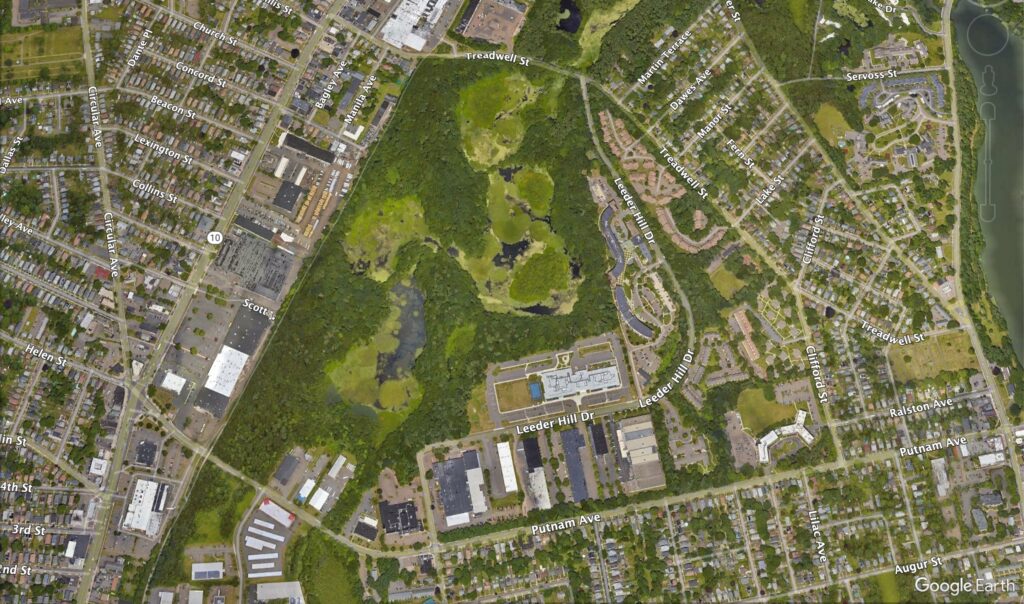
The Olin Powder Farm. Where do I start?
Justin Farmer, former District 5 Representative
HISTORY
Winchester Repeating Arms Company purchased the parcel in the late 1800s, using its swampland as a gunpowder storage area — hence the term “Powder Farm.”
And that may be where the pollution began, but it is far from where it ended.
When Olin acquired Winchester in the early 1930s, what was for decades just a powder farm became a munitions testing site and a chemical dumping ground, per a report provided to HQNN by Connecticut DEEP.
Following World War II, the report said, Olin — then known as the Western Cartridge Company — dumped wood, debris, gun powder, solvents, dry cell batteries and incinerator ash on the property.
“Like, bro, you can’t just dump batteries,” Farmer said.
The Hamden Department of Public Health in 1966 ordered the American ammunition and chemical manufacturing giant to cease its testing and dumping operations on the site.
“That’s when a lot of the dumping stopped,” said John Duff, an environmental analyst in DEEP’s remediation division and the site’s project manager. “No more burning of any of the trash and waste that were being brought to the site from the manufacturing operations that occurred in the New Haven area.”
Olin — which is worth $5.75 billion today — complied with the order. But the Missouri-based corporation had been dumping and burning hazardous materials on the southern Hamden property for more than three decades before the DPH stepped in.
And by then, the environmental damage was already done.
DEEP — known as the Department of Environmental Protection until 2011 — issued a consent order in 1986 requiring Olin to begin inspecting the site.
“It says, ‘You investigate the property and then you clean it up,’” Ray Frigon, director of DEEP’s remediation program, explained.
And to an extent, it did.
“Since that consent order was issued, Olin initiated the environmental investigation to find where the pollution is, how bad is it, how far does it extend horizontally and vertically,” Frigon said. “In the early ’90s, shortly after the investigations were initiated, the most important pollution areas at that time were being addressed.”
But once Olin cleaned up the highest-priority areas, the remediation process began to stall. And not just for a year or two — for over a decade.

Frigon said this kind of lull isn’t particularly unusual, though.
“Now we’ve got these lesser degrees of pollution, and it just kind of slowly dissipates as being a priority, either for Olin Corp. or for Connecticut DEEP,” Frigon said. “Because we have spills occurring across the state every day, and, from time to time, we need to pivot to more critical matters.”
Case in point, DEEP and Olin restarted their collective efforts to clean up Pine Swamp in the early 2000s, only to realize a much more pressing contamination site existed just a quarter-mile south.
“This was at the same time that we were discovering pollution at the Newhall Street neighborhood,” Frigon explained. “And it was identified after a fair amount of investigative work just how extensive that pollution was.”
But it wasn’t just residential areas that were polluted. It was the middle school as well.
It was school officials who accidentally discovered the extent of the contamination. In preparation for the construction of a school addition, school administrators ordered soil tests in 2000.
There was lead in the soil. Further testing revealed there was methane gas under the boiler room and toxic chemicals in the auditorium.
Because Hamden Middle School wasn’t always a middle school — for decades, the land was an industrial landfill.
The school shut down in 2002, and the town of Hamden moved its students to a new building.
But for the two years between the discovery and the middle school’s eventual closure, officials simply handed out informational pamphlets about the school’s environmental hazards to its seventh- and eighth-grade students.
The story was big enough to catch even The New York Times’ attention, and the future of the still-abandoned building remains a divisive political issue in Hamden.
It soon became apparent that Olin’s mark on Hamden extended far beyond the 100 or so acres that make up Pine Swamp.
Because, when it came time to point fingers, the DEP blamed four entities: the town of Hamden, the South Central Connecticut Regional Authority, the state Board of Education and Olin.
“We collectively determined that the right thing to do was to suspend, yet again, the work at Pine Swamp in favor of implementing the investigation and cleanup within the neighborhood itself where people are actually living and playing and enjoying their properties day in and day out,” Frigon said.
This remediation project went on to take over a decade to complete, meaning the Pine Swamp project remained on the back burner until the mid-2010s.
“In 2014, we had wrapped up work within the neighborhood, and we had directed Olin to get started again on Pine Swamp,” Frigon said.
The process, he added, was “moving in the right direction.“
That is, until it stalled once again a few years later — this time “due to other priorities that came to light,” Frigon said.
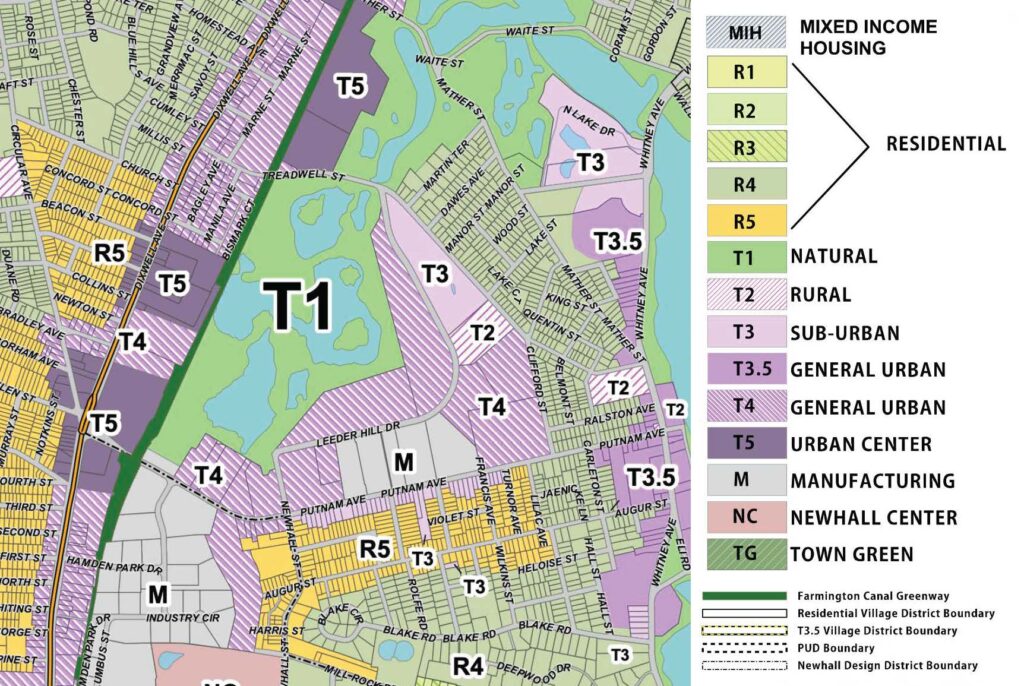
PRESENT DAY
Recently, Olin and DEEP kickstarted the remediation process for a fourth — and potentially final — time.
“Our grip on this project, at this point in time, is unshakable,” Frigon said. “We are completing this investigation.”
But between the investigation’s three pauses — one in the 1990s, the second in the 2000s and the most recent in the 2010s — Olin hasn’t conducted environmental testing on the site since 1986.
“We need to look at old data that is roughly 30 years old,” Frigon said. “As well as looking at the areas of the property that had not been thoroughly evaluated.”
But DEEP’s environmental standards have evolved in that time, becoming more stringent as newer research has become available and environmental testing technology has improved.
Chemicals that used to be measured in parts per million, for instance, can now be measured in parts per trillion, Frigon said.
For perspective, in time measurement, one part per million translates to roughly 32 seconds out of a year. One part per trillion, meanwhile, would mean 30 seconds out of a million years.
In effect, DEEP is now better able to detect — and regulate — even small amounts of contaminants.
“The benefit of having waited these years is that the order that was issued in the mid-80s is now subject to clean up standards of today,” Frigon said.
In January 2023, DEEP’s remediation division approved Olin’s investigation work plan requiring the corporation to “conduct additional investigation work to clearly delineate existing impacts to the property so that an appropriate remedial action plan can then be developed,” according to a May 2023 site summary that DEEP provided to HQNN.
Based on “documented waste disposal activities and historical detections,” DEEP’s initial list of the site’s contaminants of concern contains 17 potential pollutants, including lead, arsenic and mercury, according to the summary.
The site summary also includes a list of specific areas of concern within Pine Swamp.
“Over the past year, Olin has gone back through all prior investigation work and interim remedial action records (contamination and debris removal) to determine the status of each area of concern,” the summary states.
Of the 10 areas listed — including two burning grounds, a battery waste disposal area and a demolition debris dump site — only two have been fully remediated and are listed as “closed.”
For several of the unresolved sites, the groundwater impact is listed as unknown due to a lack of data. But as Frigon noted, Pine Swamp is “an area where the groundwater is actually utilized for drinking purposes.”
“We’re setting a very high bar on the environmental cleanup,” he said.
Representatives from DEEP, Olin and the town of Hamden on Aug. 29 conducted a 45-minute site inspection of Pine Swamp, and Olin subsequently began testing the site’s soil and water for environmental pollutants.
“They’re currently in the middle of their investigative work,” Duff, the Pine Swamp project manager, said.
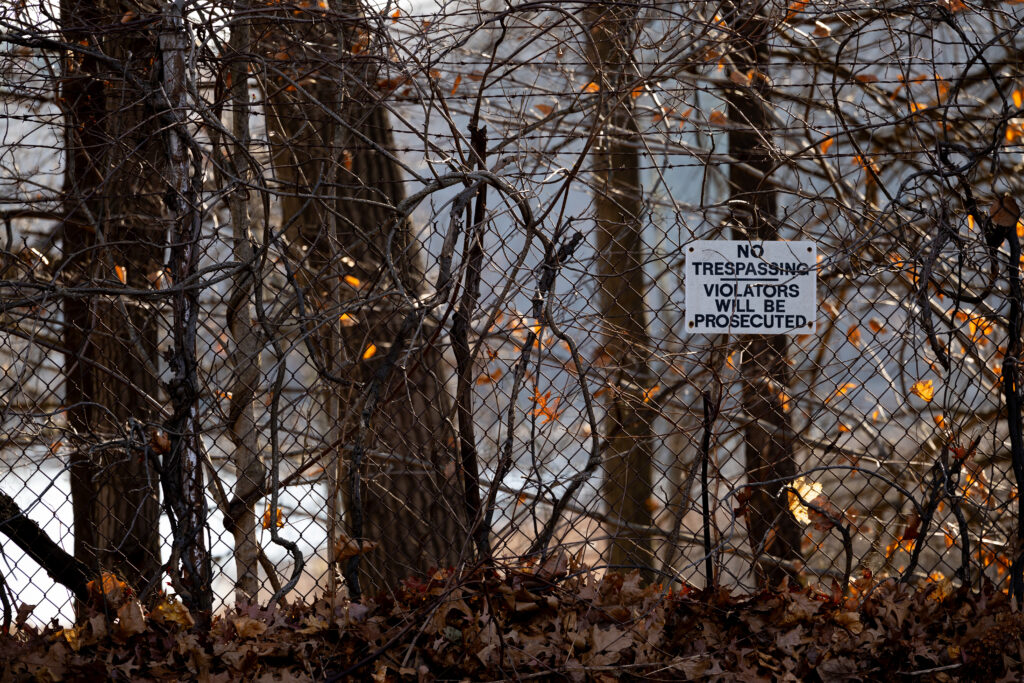
FUTURE
How long this investigation will take is still unknown.
“This is a process that will take some time,” Frigon said. “It’s not that you just go out and perform an investigation.”
Once Olin completes its on-site investigation, Duff said, DEEP will determine one of two things: that Olin needs to continue investigating, or that the corporation needs to develop a remedial action plan “to bring the site within the current standards of our mediation regulations.”
Environmental remedies will be subject to contaminant-specific cleanup standards but could include soil excavation, chemical stabilization, vapor mitigation and engineered controls.
Frigon also said the remedies used are “dependent upon the end use of the property.”
“It’s largely based upon land use — is this a residential, passive recreation, industrial or commercial type use?” Frigon said. “And in part, those uses help us determine what the appropriate remedy should be for these properties.”
But the land’s future use is still up for debate.
The town of Hamden has been pushing to acquire the land for passive recreation purposes since the 1970s.
“The area offers high potential for passive recreational activities such as bird watching, hiking, fishing, picnicking, nature study, and ice skating,” a 1979 summary of the town’s proposal stated. “Acquisition of the parcel would allow its use and enjoyment by literally hundreds of people in the immediate neighborhood and Greater New Haven area.”
Among those advocating for the creation of Hamden’s second state park is Mayor Lauren Garrett, who noted that Pine Swamp would be the “largest piece of property considered a state park within an urban setting.”
“It is a really cool site geographically,” Garrett said. “It’s a really exciting prospect for Hamden, but it does have some significant cleanup that needs to get done.”
Even beyond the cleanup itself, though, this plan poses a few challenges.
In order for the land to become a state park, the state of Connecticut would have to purchase it from Olin.
This plan requires that two things happen: first, that Olin agrees to sell the land, and second, that the state agrees to buy it.
Olin did not respond to HQNN’s request for comment.
But even if Olin — which has offered to sell the land in the past — did agree to sell Pine Swamp, the state of Connecticut would need to purchase and maintain it.
And if it didn’t, money would likely become a key issue in Pine Swamp’s future.
“The town doesn’t really have the finances to buy it, doesn’t really have the finances to maintain it, does a horrible job at maintaining properties,” said Farmer, the former Hamden representative who has been heavily involved in the Pine Swamp remediation project. “Everyone in this town agrees that the town shouldn’t own it.”
But Farmer, a Hamden native who has lived in Newhall for the majority of his life, also said he is trying to be considerate of residents’ concerns and desires.
“You cannot dictate to people what you think they want without talking to them,” Farmer said. “Certain people will deal with disparate impacts of (the contamination), and so they should have some disparate say, right?”

And, for him, this is also a matter of restorative justice and “acknowledging the detriments of environmental racism” in the predominantly Black area of southern Hamden surrounding Pine Swamp.
“It is possible but not probable that you could have a white community for 50 years contaminated, houses sinking into the ground,” Farmer said. “Fifty years ago, policies were explicitly, on purpose, to hurt and harm these people, or have negative consequences because no one talked to people who would actually be affected by the policies. And so, we know that now — all we can do is move forward and be purposeful.”
Farmer noted that this hasn’t necessarily been the town’s approach, though.
“People had to be dragged there on a very basic idea that we need to talk to people about what you want to do in the backyard,” Farmer said.
And unlike Garrett, Farmer doesn’t want a state park.
“I’d want a cultural park celebrating diversity,” Farmer said. “It’d be nice to have a park to celebrate and highlight that.”
But these visions for the Olin Powder Farm are somewhat problematic this early in the game, Frigon said.
“There has been a degree of either misunderstanding or miscommunication amongst the community that this property will become a park,” he said. “The property is currently owned by Olin Corp. — they’re the ones that, as the property owner, get to dictate what the end use may be.”
Although he clarified that the possibility of a state park “may certainly be in the cards in the future,” Frigon emphasized that “the primary focus really is on assessing the site.”
“In due time, Olin and the community may be discussing how this particular piece of property can be preserved in the future,” Frigon said. “But that is a conversation between those parties. We just want to manage those expectations accordingly.”
A MODICUM OF HOPE
The future of Pine Swamp is unknown, and it will likely remain that way for years.
But less than a mile from Pine Swamp, on the other side of Leeder Hill Drive, a nine-foot-high, 23-foot-wide concrete structure sitting deep in the woods behind Hamden’s John P. DeNicola Park proves that renewing Olin’s soiled land is indeed possible.
On May 9, 2022, an 18-year-old shot and killed Elijah Gomez — “Eli” to his friends — just days after his 15th birthday as he was walking home from school.
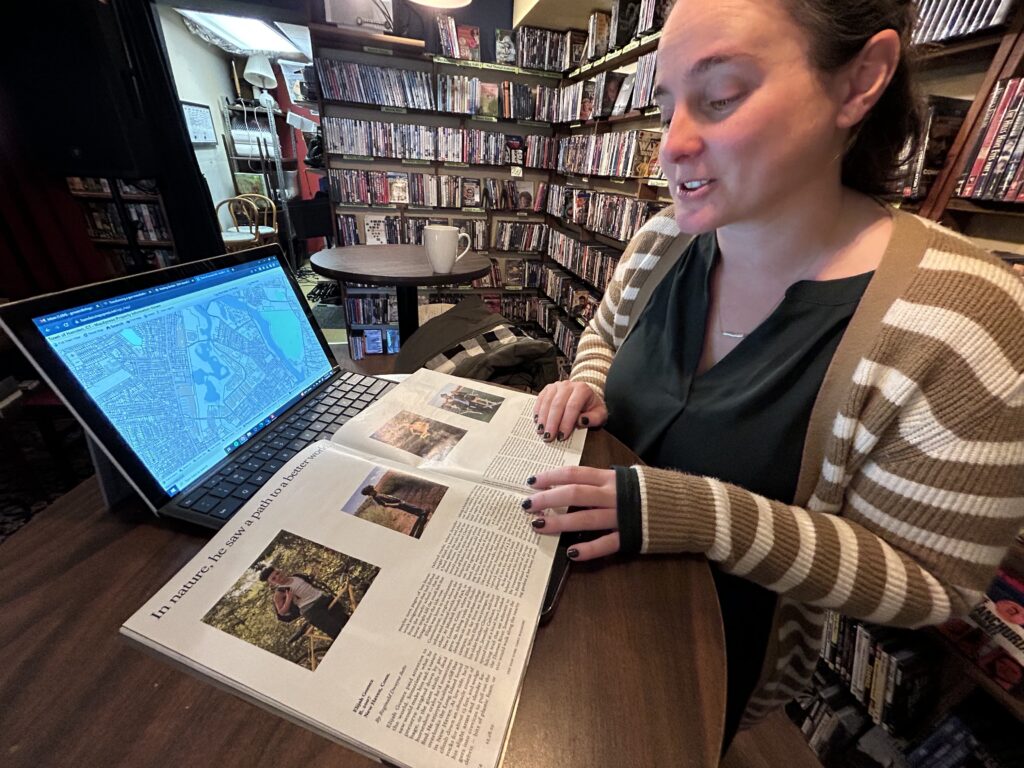
A Hamden High School freshman who played football and loved nature, Eli was taking the Farmington Canal Heritage Trail to his Leeder Hill Drive condominium when he was murdered just off of Treadwell Street.
He lived and died just outside Pine Swamp’s borders. Asked how she thought Eli would react to Olin finally cleaning up the powder farm, his aunt, Crystal Cathcart, replied almost immediately: “He would absolutely love it.”
“He would have been in there non-stop,” she said. “I mean, he would constantly be in there if it didn’t have a fence.”
A proposed memorial for Eli is slated to open just down the road in DeNicola Park.
But DeNicola Park hasn’t always been a park.
Winchester — and later Olin — owned and operated the property east of Pine Swamp’s current borders until the 1960s, when the town of Hamden purchased the parcel that now encompasses Leeder Hill Drive and DeNicola Park.
But when the town bought the land, it never tore down the ammunition test range that today still separates Leeder Hill Drive from the park.
And now, in 2023, Eli’s family is hoping to transform the “former symbol of violence” into a garden of healing named for Eli, according to the project’s website.
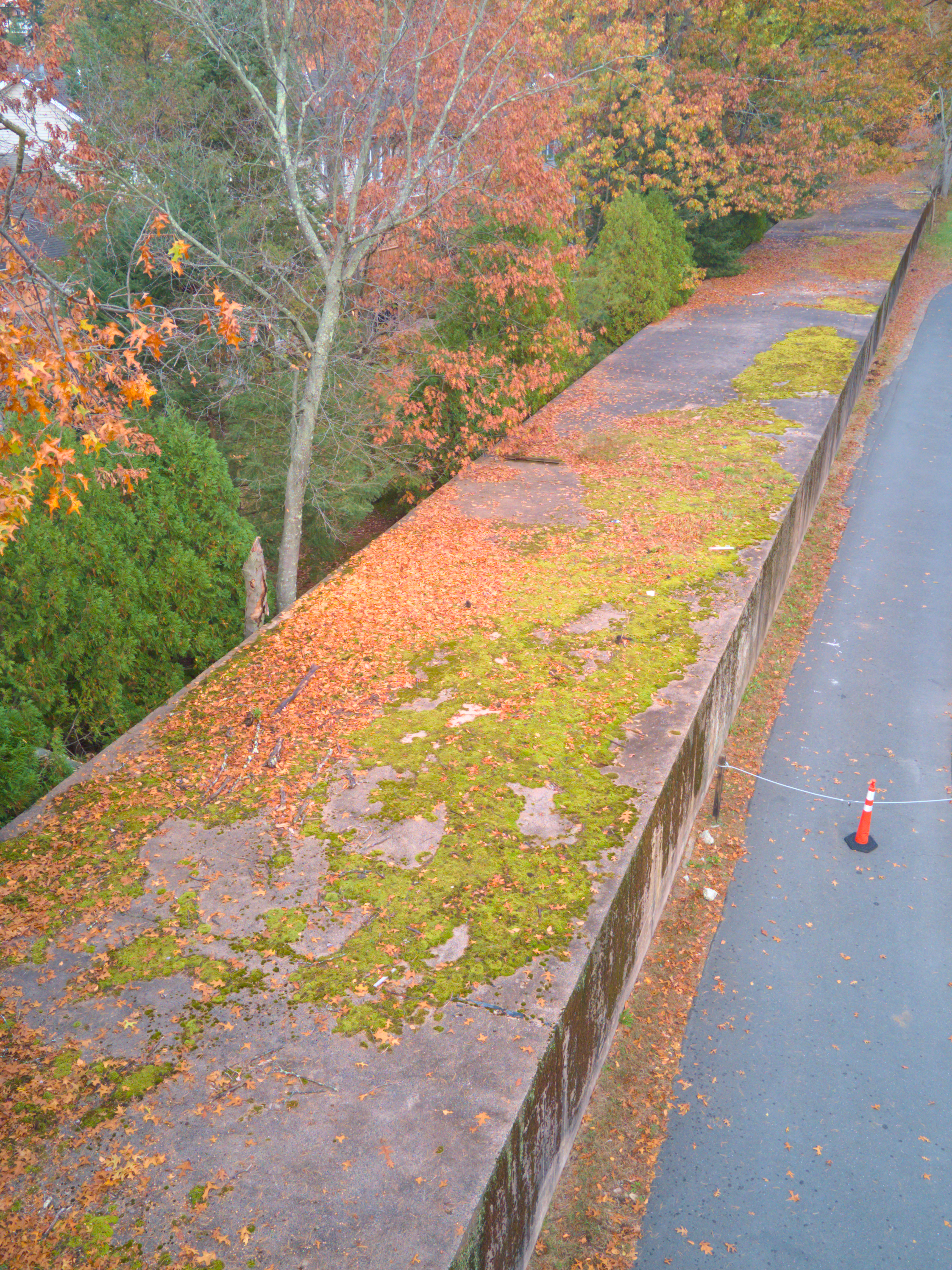
“It’s kind of poetic,” Cathcart said. “That’s the part of the walk that Elijah never finished on his day home from school.”
Because the land was once part of Olin’s firing range, it too has been subjected to years of environmental degradation. However, Cathcart said DEEP officials analyzed the soil and found little evidence of extreme environmental damage.
“We had DEEP come out and do some digging,” Cathcart said. “And they were like, ‘It doesn’t look like there’s all the contamination like at the Olin Powder Farm.’”
Even though Olin no longer owns the land where Eli’s Garden of Healing will be located, Cathcart still blames the multibillion-dollar corporation for “destroying the community.”
Cathcart said she even intends to approach Olin once the plans for Eli’s memorial are finalized.
“I’m hoping that on top of all the millions that they’re paying for everything else, they might be able to throw some money into our project too, just to say like there’s some goodwill that has to go back to this community too,” she said.
It’s in your best interest to not have the community just hear your name and cringe because of generations of trauma — in so many different ways — that have happened because of them.
Crystal Cathcart, Elijah Gomez’s aunt
She isn’t holding her breath, though.
“It doesn’t matter if they said, ‘We hate that idea, we’re not paying anything,’” she said. “Like, kick rocks. We’re still doing this.”
But she argued that Eli’s Garden of Healing may be one of Olin’s last chances to heal the wounds it inflicted upon Hamden.
“You can either be a part of this or not be a part of this,” Cathcart said of Olin. “But it’s in your best interest to not have the community just hear your name and cringe because of generations of trauma — in so many different ways — that have happened because of them.”
